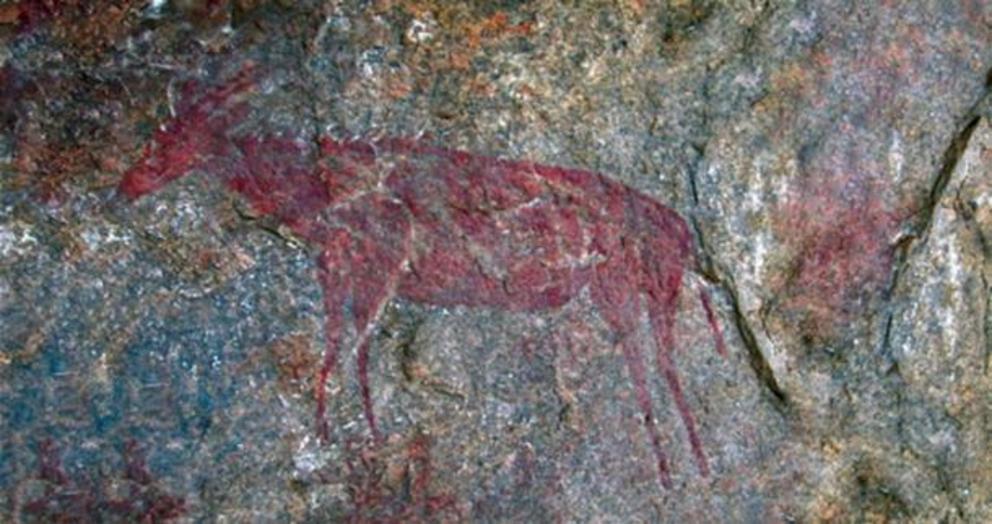Nsongezi Rock Shelter proves the skills of Stone Age craftsmen
Excavations and investigations at this site have led to a reappraisal of Stone Age people’s capabilities and culture and it seems they were much more sophisticated than previously believed. The excavation of the Nsongezi Rock shelter in Uganda has changed the view of the late Stone Age in particular. Examples of flint objects and also pottery found here show that the inhabitants had a great many skills and that they developed proto-industries.
 Nsongezi Rock Painting
Nsongezi Rock Painting
The History of Nsongezi Rock Shelter
There are several rock shelter and caves in Nsongezi, which overlooks the Kagera River and is located not far from Kansyoke Island, another important Neolithic site.
One theory claims that those who used the rock shelters were part of the Wilton culture, which was prevalent in southern and eastern Africa in the Late Stone Age . Others believe that the occupants were part of the Teso culture, which was associated with the Twa people ( Pygmies). It is also speculated that those who lived and worked near the rock shelter were related to the San, better known as the Bushmen.
 San Busgmen, Outside the village of Doupos, east of Tsumkwe, Nyae Nyae Conservancy, North East Namibia.
San Busgmen, Outside the village of Doupos, east of Tsumkwe, Nyae Nyae Conservancy, North East Namibia.
The most popular theory is that the rock shelter was inhabited by hunter-gatherers who belonged to the culture that produced the Kansyore Pottery. This was originally a group that lived mainly near rivers and lakes and who put down roots over time.
The arrival of Bantu-speaking people in about 1000 AD apparently led to the demise of the site.
Several previous excavations revealed nothing of archaeological interest. However, in 1961 there was another excavation of the site, and investigation found evidence that the Nsongezi Rock Shelter had been used from about 900 AD to 1000 AD as well as exciting archaeological artifacts.
Not only did the remote location act as a natural stronghold which first attracted people to the area, but because of its charm and beauty, it was used as a holiday resort until the Ugandan Civil Wars , after the fall of Idi Amin in 1979.
The Significance of Nsongezi Rock Shelter
Nsongezi is the only known site in the whole of Uganda to have extensive Late Stone Age microliths. These are man-made apparatus, shaped into a point by striking a small piece of stone against the flint. They were a main tools of Late Stone Age societies in Africa and elsewhere and were used in a variety of ways including for weapons such as spearheads and arrow points.
 An example of stone age scrapers
An example of stone age scrapers
Microliths such as scrappers have also been unearthed in the rock shelter as well as a great deal of debris knows as micro-burins. It is most likely that the artifacts were made by tribes who did not have skills in metallurgy. The sheer volume of microliths finds indicate that they were mass produced at the location by a multitude of craftsmen.
The production of the stone points and scrapers, etc. indicate that the peoples of the region continued to be mainly hunter-gatherers until around 1000 AD when production at the rock shelter ended and pastoralism became more widespread in the region.
Many examples of dimple-based pottery have been found in the rock shelter. This earthenware is decorated with ornate bands of squares, scrolls, and other designs. The discoveries include jugs and types of amphora, indicating perhaps that the cavern was a pottery factory as well.
How to Get to the Nsongezi Rock Shelter
The rock shelter is located in an area of outstanding natural beauty and in recent years the area around Nsongezi Rock Shelter has once more become a vacation destination. The nearest town is Mbarara and accommodation is plentiful. The rock shelter is some 50 miles (64 km) from the town it is advisable to hire a guide and a car.

